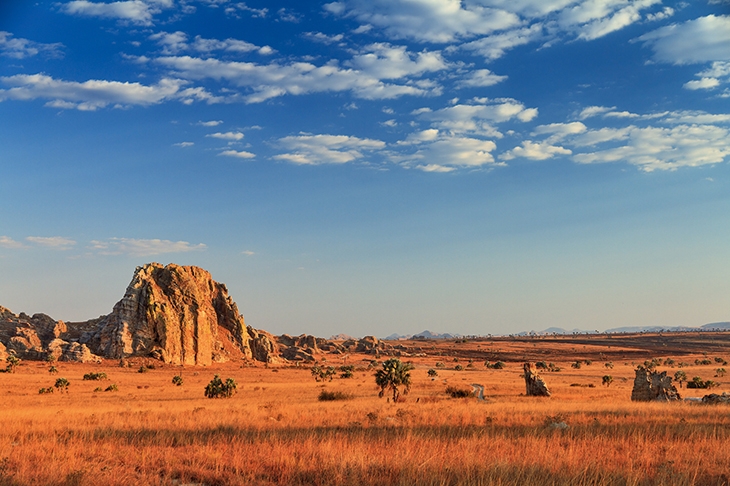Death is not the end but the beginning of a long, hard climb. At least that’s what the Bara people believe. No sooner have your bones been scraped clean than you’re off, into the Isalo Massif. Fortified with rum, your relatives will shin up the cliffs to find the perfect niche, at heights of up to 4,000ft. The greater you were, the higher they’ll climb. Occasionally they’ll fall, and there will be more rum, more climbing and more coffins. But eventually, you’ll be properly dead, enjoying eternity from the top of the world.
For outsiders, it’s a tricky business, getting to Isalo. For a start, Madagascar is stupendously big and empty. It has a road network no greater than Jamaica’s and yet it’s 53 times the size. The massif is just south of the centre, in an area that gets all its rain at once, and then almost nothing from March to October. To reach it from the capital, Antananarivo, it’s either a tenderising two-day drive, or an hour’s flight to Tulear. From the air, you might even see the massif itself, rising out of the plains like a big red cake, over 110 miles across.
Tulear gives no hint of what’s to come. It’s a breezy little city, sprawling along the beach. At low tide, old wooden schooners moor in the shallows, and the ox carts wade out to meet them. In the 17th century, English pirates settled here, and it still has a briny, swashbuckling feel. One hotel is even shaped like an ocean liner, while all the rickshaws have names like ‘Mad Max’, ‘Girlfriend’ and ‘Titanic’. Best of all is the Sea Museum, with its grotesque collection of pickled coelacanths, dredged from the depths of the Mozambique Channel.
Most of the people here are from a fishing tribe, the Vezo.







Comments
Join the debate for just £1 a month
Be part of the conversation with other Spectator readers by getting your first three months for £3.
UNLOCK ACCESS Just £1 a monthAlready a subscriber? Log in